TransForming the Jones Falls Valley
The historic mills of Baltimore’s Jones Falls Valley are
enjoying a renaissance. From Mount Washington Mill at the county line to Mount
Vernon Mill in lower Hampden, a series of mixed-use redevelopment projects has
transformed these largely under-utilized but historically significant
properties. They are now attractive hubs
for high-quality housing, office space and restaurants, returning the mill
complexes to their historic position as economic hubs for the community.
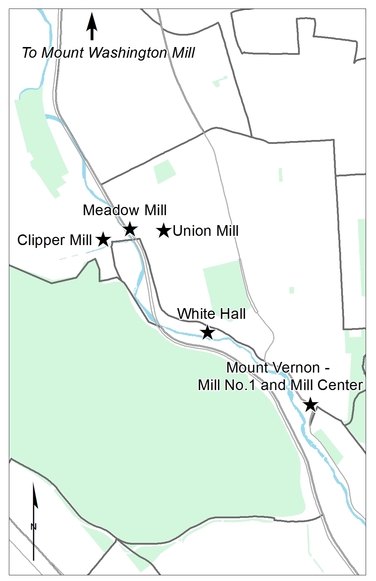
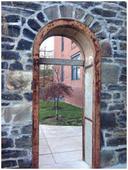
The Department of Planning has been active in reviewing each
of these developments, and will continue to do so as these projects grow and
evolve. For example, the Planning Commission has reviewed and approved
rezoning legislation, master plans, and specific designs for these sites; our
Land Use and Urban Design Division has facilitated flood plain, design
and site plan reviews; and CHAP has assisted with historic reviews and individual
applications for historic tax credits.
|
Adaptive Reuse of the Historic Mills of the Jones Valley
Here is a brief look at some recently completed mill
projects:
Mill No. 1
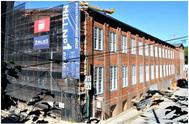
Nearing completion this summer, Mill No. 1 is an adaptive
re-use of the former Mount Vernon cotton duck mill complex located at 3000
Falls Road in Hampden by David Tufaro and TerraNova Ventures LLC.
This
development – which makes use of properties on both sides of the river –
contains a mix of 42,000 square feet of office space, 2 restaurants and 92 rental apartments.
As of publication, the Evergreen Health cooperative has signed on as the first
major commercial tenant while nearly a third of the
apartments are leased.
The Mill No. 1 project received $2,417,360
in Maryland State Historic Tax Credits, which assisted in the restoration of the
buildings signature architectural details namely, its distinctive windows and
doors.
|
Union Mill
Union Mill, the historic ‘Druid’ cotton duck mill
located at 1500 Union Ave in Hampden, was renovated by Seawall Development
Corporation in 2010.
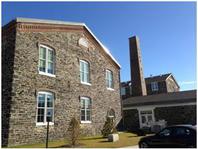
This innovative, LEED Silver project features 56 units of
fully-leased housing set aside for teachers in Baltimore City schools and
25,000 square feet of non-profit office space. Meanwhile, its restaurant space,
occupied by Artifact Coffee, is thriving as a destination for handcrafted
coffee and fresh, farm-to-table meals.
Like Mill No. 1, the Union Mill project
also received $2,920,000 in state historic preservation tax credits, and
received one of the first ever Maryland Sustainable Growth Awards in February
2013.
|
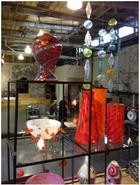 Clipper Mill
In 2003, Clipper Mill Redevelopment Company, a
subsidiary of Streuver Brothers, undertook the process of redeveloping
the
substantially vacant and underutilized former Pool and Hunt foundry
complex in
Woodberry. In its place a new mixed-use project was planned that would
comprise light industrial, offices, residences (including artisan
live-work space), and a small
amount of retail, all within walking distance of the Woodberry Light
Rail
Station.
|
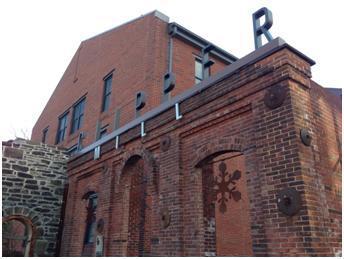
Now ten years later, the Clipper Mill complex is finally
nearing completion, and is home to numerous artisans, professional offices,
non-profits and other businesses, including the popular farm-to-table
restaurant, Woodberry Kitchen. It also boasts a mix of new apartments,
townhouses, and contemporary single-family houses that overlook Druid Hill
Park.
The formerly vacant mill site, includes a total of 169 housing units made up of 36 rental apartments, 61 one and two bedroom condo units, 34 rowhomes, and (when completed) 38 semi-detached homes. The Foundry building includes a total of 51,000 sq feet of artist, retail, and restaurant space and the Poole & Hunt Building houses 39,000 sq feet of office space.
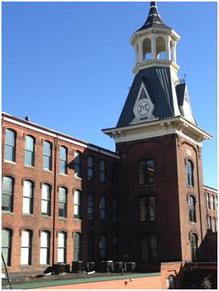
Meanwhile, the Jones Falls Valley continues to enjoy the success of other, earlier mill redevelopment projects, including Mt.
Washington Mill, the Mill Center (immediately northwest of Mill No. 1), and
Meadow Mill.
The story of the Jones Falls Valley is not over yet...
Under TransForm Baltimore most of these project areas,
despite having their own Planned Unit Developments, have been recommended for
the new industrial mixed-use (I-MU) zoning category under The historic mill
buildings and related structures truly exemplify the potential for adaptive
re-use of older industrial buildings into a mix of residential, commercial, artisan
and light industrial uses.
Others have been proposed for Transit Oriented Development (TOD) zoning to take advantage of their proximity to transit.
As we look into the future of the Jones Falls Valley, we can see the
potential for redevelopment of the
remaining mill properties, such as the White Hall project at the Komar
building, historically known as the original Clipper Mill building.
|
Click here for a recent Baltimore Sun Article on the
Jones Falls Valley and the near completion of the Mill No. 1 project. |
|
 |
What do the Compass and the NY Times have in common?
An Interest in Historic Mills!
The NY Times reported recently about another example of the adaptive reuse of an old mill, this one in North Carolina. For the article click here.
|